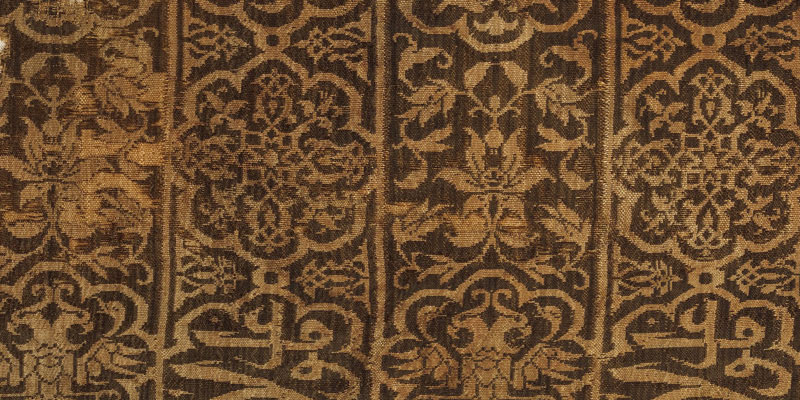
Mamluk Material Culture: Foreign aesthetics and their impact on Mamluk textiles (1250-1517) Shireen El Kassem
Event details
Textiles have always had a prominent place within the Islamic world. In addition to their economic value, they played an important role in social, political and religious contexts. A large number of preserved textiles dating from the Mamluk period (1250-1517) provide possibly the earliest and most complete picture about textile trade and diplomatic activities in Egypt and Syria before the Ottoman conquest in 1517.
Owing to its privileged location between Europe and Asia and control of important pilgrimage sites (Jerusalem, Mecca and Medina), the Mamluk Sultanate became an important centre of intercultural and artistic exchange where locals mingled with foreign diplomatic embassies, pilgrims, merchants and travellers. Although the Mamluks were mainly of Qipchak Turkic and Caucasian Circassian origins, the society itself was composed of a large variety of ethnic and religious backgrounds.
Such a rich cultural and international environment had an impact on the formation of Mamluk art and in particular on textile production.
Join Shireen El Kassem of the University of Bonn as she explores how the fashion taste of Mamluk society was shaped by various trends and influences from abroad through an examination of Mamluk and non-Mamluk textiles, including those produced in India, China and Mongol regions.
Shireen's talk is part of a series of events organised by the York Islamic Art Circle, a collaboration between the University of York’s Islamic Society and Department of History of Art.
Image credit: Fragment of a coat, early 14th century. The Met
About the speaker
Shireen El Kassem gained her BA degree in History of Art and Archaeology at the University of Sorbonne – Paris IV and continued to develop her knowledge and passion for Islamic material culture through MA studies at the School of Oriental and African Studies (SOAS), the University of London. In 2015, she joined the Nasser D. Khalili Collection of Islamic Art where she contributed to the forthcoming publication of unillustrated manuscripts of the Islamic world. Presently, Shireen is a doctoral student at the University of Bonn and specialises in the study of Mamluk silk production in Egypt and Syria from 1250 to 1400.
Partners

